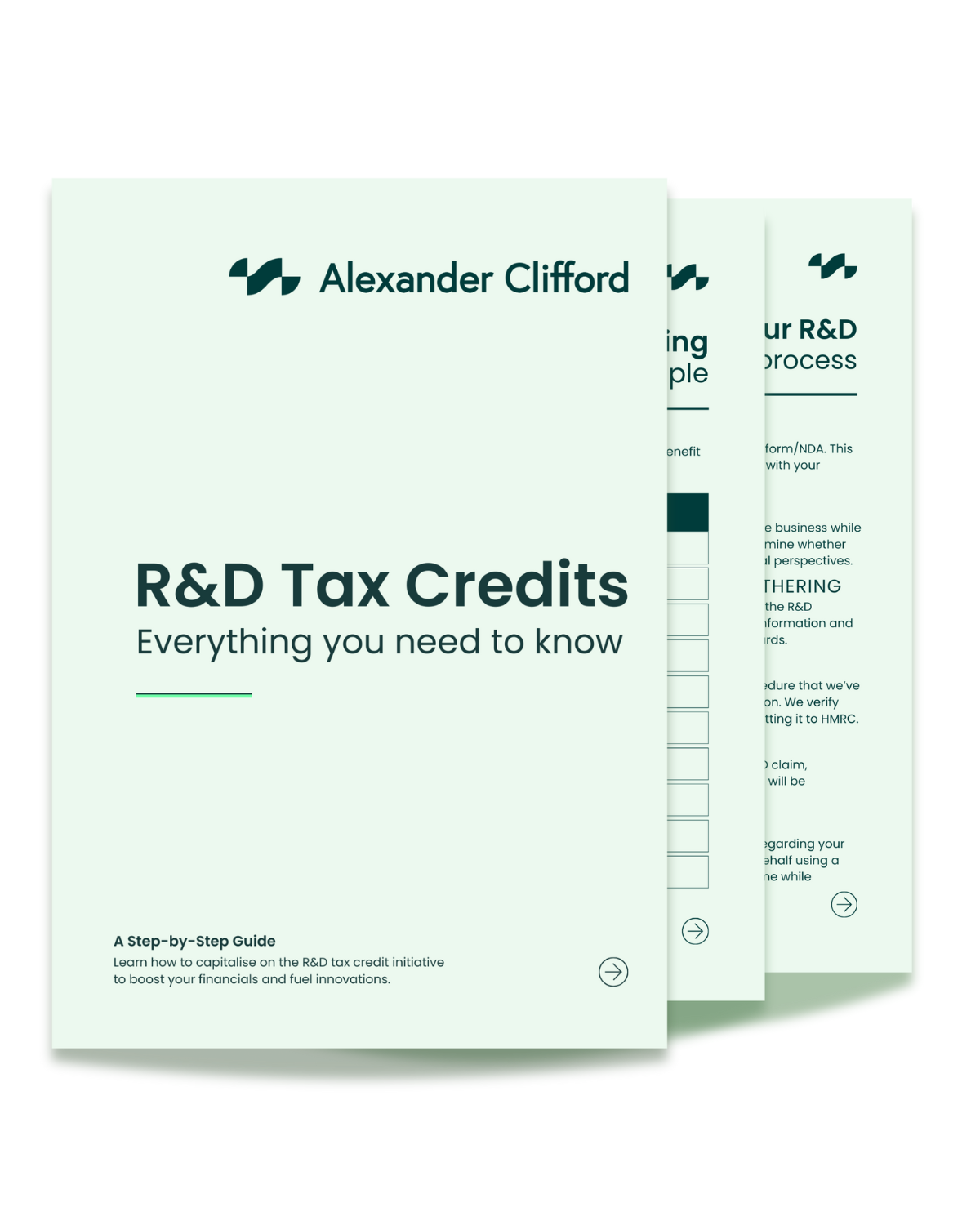How UK R&D Tax Credits Compare to Global Relief Schemes

Businesses around the world are benefitting from various forms of government run R&D relief, but how do they compare with UK R&D tax credits? We take a deeper look at global research and development funding, how R&D tax relief affects economies, and the key differences between R&D funding in the UK and other economic leaders.
As a society, we’re obsessed with progress. This is why many businesses throughout the world invest in research and development projects that aim to advance our knowledge and capabilities.
With global economies experiencing dramatic inflation, innovation now comes at a great monetary cost. Luckily the world is rife with government support for research and development, meaning businesses can continue their quests for progress.
Today we’re looking a little deeper into R&D initiatives around the world, to see how they compare to the UK R&D tax credit relief.
What are R&D Tax Credits?
R&D tax credits are a financial incentive for businesses investing in profound research and development. They work by enabling businesses to reduce their corporation tax liabilities or in some cases, receive cash benefits.
Many R&D tax credit incentives around the world require projects to meet a specific definition of research and development. The definitions of research and development usually align with these points:
- Project seeks an advancement in science or technology
- Project aims to resolve a technical uncertainty
- Technical uncertainty should not be easily solved by an industry expert
Essentially, qualifying projects should aim to make an advancement where a competent professional can’t guarantee a successful outcome. This can make qualifying research and development risky.
How R&D Tax Credits Impact Global Economies
If you’ve been focused on the news lately, you may have noticed that the British government has been urging their encouragement for UK AI development. This is because advancement in of the world’s most popular technologies can have a significant impact on the British economy.
The same can be said for other forms of innovation in science and technology, which is why governments are heavily invested in R&D relief incentives. The following details how R&D tax credits impact global economies:
- Drives scientific and technological innovation
- Encourages foreign investment
- Improves job creation in high skill sectors
- Enhances global competitiveness
- Builds long term economic stability
Global R&D Tax Relief Programmes
Here in the UK, we have the R&D tax credit relief which is overseen by HMRC. Other R&D tax relief programmes throughout the world include:
- Federal R&D Tax Credit (United States of America)
The US federal government provides a research and experimentation (R&E) tax credit which is available for businesses investing in innovation, engineering or software development - Crédit d’Impôt Recherche (France)
France’s crédit d’impôt recherche (CIR) provides generous R&D tax relief that provides up to a 30% return on expenses up to €100million - Scientific Research and Experimental Development (Canada)
The Canadian scientific research and experimental development (SR&ED) programme supports businesses investing in experimental development, applied research, and process improvements - R&D Tax Incentive (Australia)
Australia’s R&D tax incentive (RDTI) provides financial support for businesses developing new or improved products, processes, and services
How do UK R&D Tax Credits Differ from Other Countries?
Many countries providing this form of relief have different agencies managing claims, whereas the UK’s R&D tax credit relief is wholly overseen by HMRC. Additionally up until April 2024, the UK’s relief operated on a two tier system that provided additional support for SMEs (small and medium sized enterprises).
This vastly separated Britain’s relief from those around the world, as it ensured that any business investing in scientific or technological research and development that aimed to produce a new or improved product, process, service or software, was eligible for financial support.
Recent changes mean that instead of operating under a two tier system, UK R&D tax credits now operates under these two schemes:
- The Merged Scheme
Serves both SMEs and large businesses with matching rates, and simplifies the relief - Enhanced R&D Intensive Support (ERIS)
Provides additional support for loss making SMEs that invest over 30% into research and development
Qualifying Expenditure Differences
While some countries only allow businesses to claim payroll and direct costs, the UK R&D tax credit relief enables businesses to claim a wide range of costs that are vital to the research and development process, including these qualifying costs:
- Consumable items (including materials and some utilities)
- Staff costs (including PAYE, Class 1 NIC, and pension contributions)
- Software used directly in R&D
- Test stage prototypes
- Clinical trials
- Externally provided workers (EPW’s)
Key Benefits of Claiming R&D Tax Credits
Aside from the monetary injection into your business, R&D tax credits can provide significant benefits for businesses that claim them. Some of the benefits of R&D tax credits include:
- Improved market competitiveness
- Enhanced reputation to customers/clients
- Greater appeal to investors
- Reduces corporation tax liabilities
Challenges Businesses Face When Claiming R&D Tax Credits
HMRC has strengthened the R&D tax credit relief by increasing compliance checks, to clamp down on fraud and error. This can be challenging for claimants, as compliance becomes a core focus. This is where Alexander Clifford comes in.
R&D Tax Credits Made Simple With Alexander Clifford
At Alexander Clifford, we take a straightforward and transparent approach to UK R&D tax credits, making sure every claim is accurate, compliant and maximised for your business.
By carefully assessing their projects and identifying qualifying costs that are often overlooked, we have already secured over £83 million in R&D tax credits for our clients. Combining our attention to detail and our focus on getting it right, we ensure you receive every penny you’re entitled to.
Make the R&D claims process as simple and stress free as possible by filling out the contact form below or book an appointment at a time that suits you.
Book a quick call







